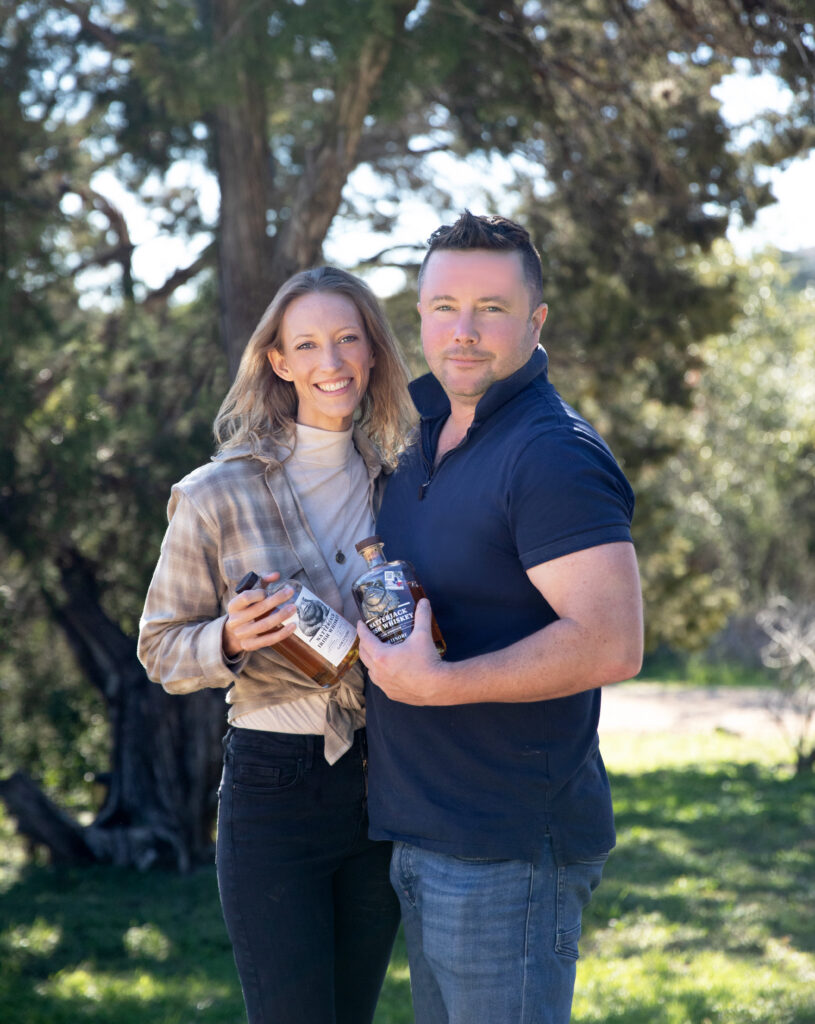The Irish whiskey category has grown significantly in recent years but can still suffer from seeming a little narrow in scope. It’s a space dominated by a single behemoth brand with a lot of lookalikes. As American whiskey continues to expand and pull in new consumers through innovation, the question can be asked of Irish imports: Where’s your evolution? What’s next?
One brand that might be onto something new is Natterjack. Launched at the beginning of the pandemic, this product, currently sourced, takes many cues from bourbon. The squat curved bottle looks like a microdistillery’s output. The beefy toad logo reflects American marketing’s love of eye-catching critters appearing on alcohol labels. And the leadership includes veteran head distiller Jordan Via, who cofounded Breckenridge Distillery among other industry accolades.
Currently the brand is in 14 U.S. states. The juice has caught attention. Especially the cask strength. It’s a much-welcomed 126 proof in a category known for — and sometimes dismissed as — being light. Natterjack Cask Strength won Best Irish Whiskey of the Year in the 2024 Whiskey Bible.
We recently sat down with Founder Aidan Mehigan and his wife Faye to talk about launching a modern Irish whiskey brand.
Beverage Dynamics: Tell us about launching a new Irish whiskey brand.
Aidan Mehigan: We launched in 2019 but really the idea for the brand goes back to 2015-2016. I remember not liking what was out there in the category. I didn’t have a favorite Irish whiskey. I thought, ‘How is it that Irish whiskey has missed me when I have this disposable income?’ I also thought that Irish whiskey was following Scotch down the path of provenance, of being too stuffy.
I love bourbon and I have a favorite bourbon. That’s what brought us to learn about what it takes to make whiskey and build something in the category.
Faye Mehigan: We were looking for a way to broaden the category and bring in younger consumers. We wanted to appeal to women and show that brown spirits can be more accessible.
And there’s no point in trying to imitate what the big guys are doing.
AM: You have to be different. In Irish whisky, the branding is traditionally the place name or the surname. Tullamore or Jameson. We actually approached the Irish Food Board and got them to add a third category: abstract. We went into that.
We didn’t want to be a place name or surname whisky. Mehigans doesn’t mean anything.
FM: And it would have been a place name or surname without any history.
BD: Why a cask strength at 126 proof?
AM: It goes back to us wanting to tell our story honestly. Other Irish whiskey cask strengths come in around 55 or 57% ABV. We wanted a true cask strength. We wanted to show folks what’s in the barrel. Open it up, pour through a sieve, and what comes out.
FM: When you’re more picky about the ABV in your cask strength, it’s a way to hide weaknesses in whiskey. It’s a bit too hot, it’s sharp, it’s rough. For us, we wanted to be really honest, warts and all. That’s our philosophy, and it goes well with the toad, too.
BD: I’m seeing more animals in whiskey branding, like Blue Run’s butterfly. Why the natterjack toad?
AM: For starters it’s the only indigenous toad in Ireland.
FM: It’s a tiny steal from bourbon, where you see buffalos and lions and other critters on bottles.
The thing about being a startup, it’s a struggle. The toad embodies that. It embodies doing things your own way, too, sometimes. It’s nocturnal like Irish whiskey drinkers. And it changes its behavior based on situations. These natterjack toads, they live in little pools in the Irish dunes. They get loads of rain there. In order to not drown, the toad has to climb up and out of the pool. It changes its behavior to survive.
When we launched in 2019-2020, we were pinpointing on-premise. Then Covid hit and we had to change. We pivoted to the off-premise. And that’s where we’re still the strongest. In the off-premise in New York.
I love the idea of a really ugly spirit animal. We’re doing things differently. It really appeals to our sense of fun. And what does the shelf of Irish whiskey look like? And what makes people look at that shelf and think, ‘Huh, I think I want to try that’.
This interview was edited and condensed for publication.
Kyle Swartz is editor of Beverage Dynamics. Reach him at kswartz@epgmediallc.com. Read his recent pieces, Consumer Demand Drives Alcohol Shipping Growth and How Retailers Will Handle Allocated Whiskey in 2024.





